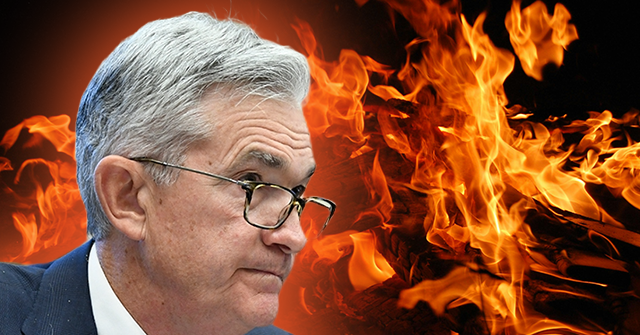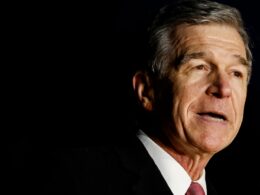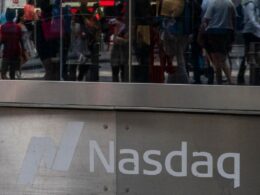Economic Growth Rips Higher Than Expected
Economic growth picked up more than expected in the spring, not only undermining the case for rate cuts but also raising the possibility that the Federal Reserve still has not done enough to cool the economy off to bring inflation down to its two percent target.
The Bureau of Economic Analysis said Thursday that real gross domestic product (GDP) expanded at a 2.8 percent annual rate in the second quarter. That is twice the pace of the 1.4 percent recorded in the first quarter of the year and significantly stronger than the two percent consensus forecast.
Consumer spending, the engine of the U.S. economy, rose at a 2.3 percent annual rate in the April through June period, matching the rate of growth in the first quarter and defying expectations for a slowdown. This contributed about 1.6 percentage points to growth.
Durable Goods Consumption Is Back to Growth
The rotation away from goods that had weighed on the manufacturing sector has run its course. Goods purchases rose 2.5 percent, an acceleration from the previous quarter’s 1.5 percent growth rate. Nondurable goods consumption flipped from a 1.1 percent contraction to a 1.4 percent expansion. After adjusting for inflation, households spent more on food, beverages, gasoline, and energy, and less on clothing and footware.
Durable goods spending was even more impressive, climbing at a 4.7 percent rate. Spending on cars and trucks made a positive contribution to GDP growth for the first time following four consecutive quarters of being a drag. Furniture and appliance spending made their largest contribution to growth since the first quarter of 2021 after being flat in the first quarter of this year and near flat in the fourth quarter of last year.
Even recreation durables added to GDP growth in the second quarter after being a subtraction in the first quarter.
This is not the behavior of a household sector that is rolling over or softening. American consumers were buying big ticket items, many of which are typically financed, despite supposedly restrictive interest rates.
Services consumption rose by 2.2 percent, a deceleration from the previous quarter but still a solid rate of growth. To put that in context, quarterly growth averaged 2.4 percent last year. Within services, there were accelerations in discretionary categories like travel, dining out, and recreation. The biggest deceleration was in softer growth in inflation-adjusted health care spending, a non-cyclical part of the economy that had seen some outsized growth in recent years.
Dudley’s Errant Rate Cut Call
This suggests that the recent Bloomberg op-ed by former New York Fed President Bill Dudley, in which he called for an immediate rate cut from the Fed as soon as the June meeting, was off-base.
“Now, the Fed’s efforts to cool the economy are having a visible effect. Granted, wealthy households are still consuming, thanks to buoyant asset prices and mortgages refinanced at historically low long-term rates,” Dudley wrote. “But the rest have generally depleted what they managed to save from the government’s huge fiscal transfers, and they’re feeling the impact of higher rates on their credit cards and auto loans.”
Nothing in the second quarter’s GDP report supports the idea that “the rest” of American households have depleted their spending power or are being held back by higher rates on credit cards and auto loans.
To the contrary, of the best indicators of the strength of private sector demand maintained a solid pace of growth in the second quarter. Final sales to private domestic purchasers grew 2.6 percent for the second consecutive quarter, putting the growth for the first half of 2024 right in line with the growth in the first half of 2023.
There was a notable uptick in business spending that should give rise to optimism about future productivity gains, the ultimate driver of growth. Nonresidential fixed investment–a crucial indicator encompassing outlays on commercial construction, equipment, and software–surged at a 5.2 percent rate. The primary driver was an 11.6 percent increase in spending on equipment, even as investment in structures saw a decline.
This is also a vote of confidence in the economy, likely reflecting Donald Trump’s surging popularity with voters and the related anticipation that the Biden-Harris administration might be coming to an end or, at least, that their plans to raise taxes on businesses and enact even higher regulatory burdens to growth would be stymied.
We can see another sign of rising business confidence in inventory growth. As anticipated, inventories rebounded in the second quarter, contributing 0.8 percentage points to growth after being a drag in the first quarter. Meanwhile, net exports detracted from growth, shaving off 0.7 percentage points. These volatile elements effectively canceled each other out. Exports grew by 2.0 percent, but imports surged by 6.9 percent—fueled by strong household consumption and business investment.
Dark Clouds in a Sunny Report
There were some parts of the report that are not as good news. Residential investment fell in the second quarter following three consecutive quarters of growth, likely reflecting the drag of high interest rates but also the surge of building last year that has left homebuilders with more inventory than they would like. The threat of lower interest rates bringing existing homes on to the market, lowering demand for new homes, may also have slowed down building.
Nonresidential structures investment fell by 3.3 percent. This category saw double-digit growth rates last year thanks to fiscal policies aimed at boosting high-tech factory construction. That growth raised construction employment and allowed the Biden-Harris administration to claim that America was experiencing a manufacturing boom. The contraction in the second quarter indicates that some of this growth was actually borrowed from the future. As a result, this may remain weak in future quarters now that fiscal support has run its course.
An unwelcome development was a 3.1 percent rise in government consumption. This was driven by a surge in federal spending, especially in the defense sector, where consumption surged 5.2 percent. This suggests that War Keynesianism is playing too large a role in boosting growth—and may be draining real resources that could be used in other sectors of the economy. What’s more, building rockets that get used in foreign wars does not add to national wealth in the way that domestic investment or consumption does.
Finally, core personal consumption expenditure inflation came in at a higher-than-expected 2.9 percent seasonally adjusted annualized rate. This either means that there will be upward revisions to the softer inflation prints for prior months or that the June inflation figure, due out tomorrow, will come in higher than forecast.
The Facts Change, But Rate Cut Opinions Stay the Same
The much higher-than-expected rate of economic growth and higher inflation rate has not shaken Wall Street’s faith that the Fed will cut in September–although it did choke off the small hope that the Fed could cut in June. There’s more than a hint of irrationality in the fixation on a September cut. More growth means less urgency to cut, and more inflation means more upside risk to inflation from a cut, which should translate into a paring back of rate cut expectations.
The rosy-interpretation being passed around by Wall Street analysts on Thursday is that this report bolsters the case for the soft-landing scenario, in which inflation falls back to target without a downturn. That is somehow supposed to lead to a series of Fed cuts that keep asset prices rising without triggering inflation at the consumer level.
That’s still a possible outcome, but we think this report makes it less likely. Instead, we see an economy that remains resistant to the Fed’s attempt to slow things down and indications that the stance of monetary policy is far less restrictive than the Fed supposes. That, in turn, raises the risk that to bring down inflation, monetary policy will have to tighten further, either through a rate raise or a renewed commitment to keep rates higher for longer.
Wall Street has been wrong about the economy for four years running. It thought inflation would be transitory in 2021, it underestimated the Fed’s response in 2022, it was convinced that the Fed’s hikes would cause a recession in 2023, and it entered this year expecting five cuts. Why should we expect it to start getting things right now?
The problem is that the Fed has been wrong almost as often, raising the risk of a policy mistake—in the form of a premature rate cut this year—that winds up fueling inflation.








